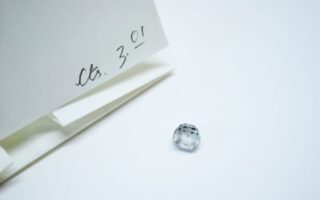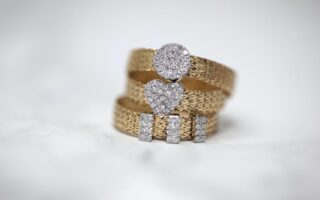According to Celtic Crystal Design, a Scottish Luckenbooth brooch is a heart-shaped brooch. They may have a crown above one heart or two intertwined hearts and are as traditional as kilt pins or clan badges in Scotland. Let’s see exactly how the Scottish Luckenbooth came to be, its significance, and its history.
Table of Contents
Beginnings
The very first brooches were small plain heart-shaped pins that a man offered his lover as a betrothal gift or love token. They were often engraved with the lovers’ initials or romantic biblical sayings. The National Museum of Scotland is home to an extensive collection of Luckenbooth brooches, some being engraved with “Wrong not the heart whose joy thou art” or “My heart you have and yours I crave.”
Dating from the 15th century, the brooches were usually made of silver, symbolizing both protection and love. When a woman had a child, a brooch would be pinned to the child’s clothes to ward off witches. Silver was commonly chosen for the lucky charms because it was a more affordable material for the poorer people. Gold-heart brooches were often made for wealthy people.
Changing Styles
In time, Luckenbooth brooches became larger, featuring two hearts intertwined. Then, a crown started to be placed atop the hearts in the mid-1700s. The brooches were often called Mary brooches due to their M-like design. Mary brooches also relate to Mary, Queen of Scots, who ruled Scotland from 1542 to 1567 and was beheaded in 1587 by Queen Elizabeth I, her cousin.
The Highland silver trade was centered in Inverness, so the silversmiths developed their distinctive design: the crown atop the hearts was stylized with a shape looking like two birds facing opposite directions. Moreover, fleurs-de-lis sometimes decorated the sides of the heart, suggesting Scotland’s historical connection with France.
A Name Change
The name comes from the Luckenbooths, the Gaelic word for a range of tenements that stood immediately to the north of St. Giles’ Kirk in the High Street of Edinburgh from the reign of King James II in the 15th century to the early years of the 19th century. The names of the heart brooches changed in the late 1800s into Luckenbooth brooches. Walter Scott’s novel The Heart of Midlothian, published in 1818, includes a detailed description of the Luckenbooths shortly before their disappearance.
Back then, they were used for selling goods by tradespeople or merchants. At night, the brooches were locked to prevent theft.
Until the 19th century, Luckenbooth brooches were worn by ordinary people due to their plain appearance. According to the Scottish National Portrait Gallery, they didn’t appear in the early Scottish portraits because such paintings were not commissioned by ordinary people but by wealthy ones.
The brooches changed almost completely by the late 19th century, becoming something more elaborate, often enameled or decorated with gemstones. However, less expensive versions of the brooches continued to be available due to the Industrial Revolution.
Luckenbooth Brooches Today
The brooches are not as popular nowadays as they used to be, but they haven’t disappeared from the market either. Silversmiths still create Luckenbooth brooches using molds based on the older styles. They sell relatively inexpensively throughout Scotland, but you can find unique, custom pieces at silversmiths.



